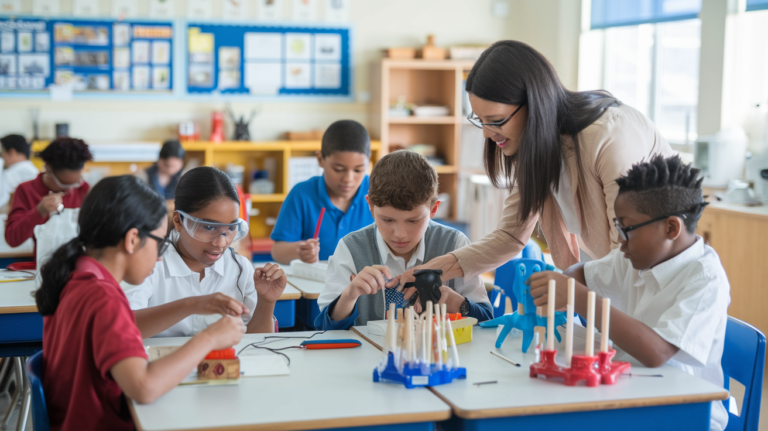Have you ever felt puzzled when typical art class projects just didn’t spark your child’s interest? My son Idan, at age four, once sat in a bright, bustling classroom, entirely transfixed by the ripples in his water cup instead of painting the “required” butterfly. That was the day I realized how autism creative thinking can follow a much more fascinating path than the typical approach to art.
Instead of aiming for picture-perfect results, autism creative thinking often flourishes in unexpected ways. In this post, we’ll explore how you can nurture your child’s imagination—whether through painting, object arrangements, music, or even patterns made from breakfast cereal. Together, we’ll learn to see creativity through our children’s eyes.
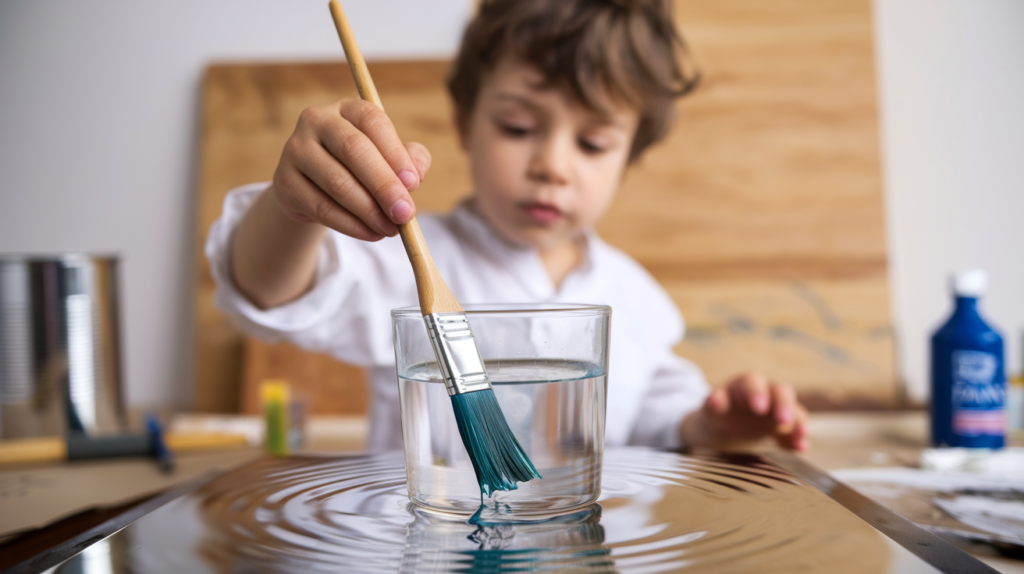
Breaking the Mold: Understanding Autism Creative Thinking
Artistic expression isn’t just about producing frame-worthy paintings or following art-class instructions to the letter. For our autistic children, creative thinking might involve focusing on a detail that others overlook, like ripples in a water cup. It’s about how they perceive, process, and respond to the world around them.
When Idan discovered the reflective dance of water under classroom lights, that moment reminded me that creativity in autism doesn’t always align with typical art activities. Rather than trying to “fix” this behavior, I learned to embrace his unique approach and encourage him to explore what intrigued him.
Different Forms of Artistic Expression
Embracing autism creative thinking means broadening your definition of art. For many autistic children, creativity emerges through:
- Visual Arts
- Digital art or drawing apps
- Pattern creation with stickers or stamps
- Photography of favorite objects
- Collages or mixed-media explorations
- Movement and Space
- Building with blocks or LEGO
- Creating routes with tape or string
- Dance or rhythmic movement
- Sand or water play arrangements
- Sound and Musical Expression
- Rhythm-making with everyday objects
- Humming or vocalizing spontaneous melodies
- Exploring instruments in unconventional ways
- Digital music creation or sound mixing
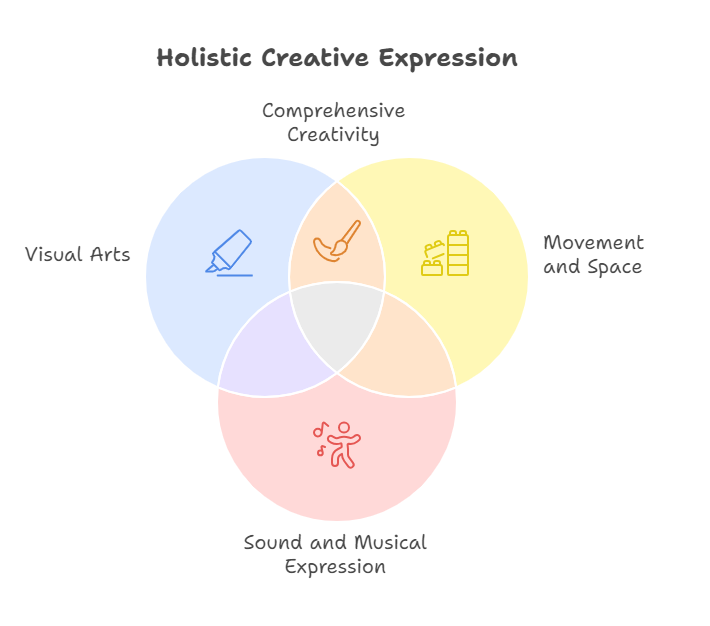
Real Talk: When Idan got hold of my phone’s camera, he didn’t take selfies or scenic shots—he documented every single air conditioning unit in our neighborhood. Not the typical photo gallery, but a remarkable study of shapes and patterns!
Seeing the Extraordinary in Everyday Activities
A pivotal moment in our journey was when Idan spent an entire afternoon arranging colored stones into meticulous spirals. At first glance, it looked like “just playing,” but a closer look revealed intricate color sequencing and spatial precision. This was art in its purest form—unconventional yet deeply meaningful.
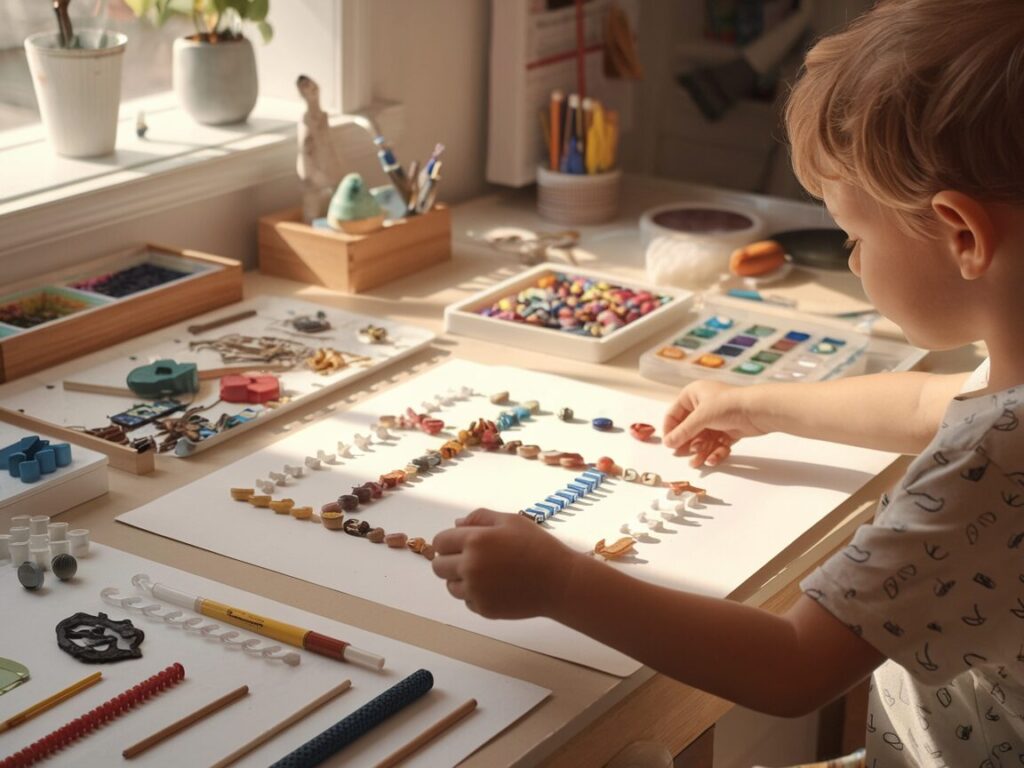
Embrace Repetitive Play
Many autistic children are drawn to repetitive behaviors or obsessions. Rather than discouraging these patterns, try to see them as creative expression. Your child might reveal a stunning sense of order, geometry, or visual harmony.
Creating a Sensory-Friendly Art Space
To unlock autism creative thinking, you need an environment that supports sensory needs. Traditional classrooms can be loud and visually overwhelming, so consider setting up a sensory-friendly corner at home.
- Lighting
- Opt for natural light near windows.
- Avoid harsh fluorescents that flicker and buzz.
- Use adjustable lamps or LED strips to control brightness.
- Sound Management
- Set up a quiet zone away from household noise.
- Provide noise-canceling headphones.
- Use soft rugs or curtains to dampen echoes.
- Texture and Comfort
- Offer cushions or wobble chairs for different sensory preferences.
- Choose easy-to-clean surfaces for carefree experimentation.
- Provide various tactile supplies like play dough or kinetic sand.
- Organization
- Store art materials in clear containers so your child can see what’s available.
- Label each container with words or pictures.
- Keep a designated cleanup station for quick resets.
Beyond the Paintbrush: Unconventional Art Materials
Sometimes, your child’s best art supplies won’t come from a craft store. Autism creative thinking can bloom when they explore materials that truly captivate them, such as:
- Natural Elements: Leaves, stones, shells, or twigs.
- Recyclables: Cardboard tubes, cereal boxes, plastic bottle caps.
- Kitchen Items: Dry pasta, rice, beans, or even baking soda and vinegar for “science-art.”
- Digital Tools: Drawing tablets, pattern-making software, or music creation apps.
Pro Tip: Always consider safety. If your child tends to mouth objects, choose materials that aren’t choking hazards. Supervision is key!
Supporting Without Steering: Finding the Balance
It’s natural to want to guide your child, but too much direction can stifle creative thinking. Provide materials and encouragement without forcing a specific outcome. A few tips:
| Area | What To Do | What To Avoid | Real-Life Example |
|---|---|---|---|
| Physical Support | – Create easy access to art supplies – Provide comfortable seating options | – Restricting movement – Over-organizing the space | Idan has open shelves of stones so he can start creating anytime he feels inspired. |
| Emotional Support | – Observe quietly – Accept unconventional choices | – Asking “What are you making?” – Rushing to help | We let Idan arrange objects for hours without pushing for an explanation. |
| Communication | – Let them share when they’re ready – Use ASL signs for “create” or “imagine” | – Forcing explanations – Comparing to other children | We respond with: “I see you’re working on something interesting” and wait for him to elaborate if he wants. |
| Problem-Solving | – Offer breaks – Provide backup materials | – Showing frustration – Taking over completely | If Idan’s pattern falls apart, we calmly ask if he’d like more supplies or a new surface. |
Encouraging Independence: Time and Space to Create
Allow your child the freedom to explore independently:
- Morning Creativity
- If your child is an early riser with high energy, give them 15 minutes of art time before school.
- Afternoon or Weekend Projects
- Let them decompress from a busy day or let big ideas unfold over weekends.
- Evening Calm
- Dim the lights, use soft music or white noise, and allow for quieter forms of creativity like coloring or sorting.
Real-Life Example: Embracing Idan’s Stone Arrangements
When Idan discovered a newfound passion for colored stones, his patterns evolved day by day. Some were tight spirals; others were geometric grids. My role? Simply providing more stones and a safe workspace. Over time, Idan’s stone art became a form of communication, where each pattern represented a mood or an experience he couldn’t easily describe in words.
One evening, relatives asked him repeatedly, “What are you making?” I saw his anxiety rise. At that moment, I gently intervened, saying, “Idan’s exploring patterns right now—let’s give him space.” This small act of advocacy preserved his creative flow and respected his sensory boundaries.
Conclusion: Embracing Your Child’s Unique Creative Voice
Autism creative thinking blossoms when we step back and let our children lead. Traditional models of art instruction can feel confining for an autistic mind that loves to explore textures, shapes, and patterns in its own way.
- Observe quietly rather than asking, “What are you making?”
- Celebrate the process over the final result.
- Offer varied materials that match your child’s sensory preferences.
- Incorporate ASL for words like “imagine” and “create” to support communication.
- Document creations if your child is comfortable—photos, videos, or journaling can capture the evolution of their art.
Ultimately, fostering autism creative thinking is about embracing the unpredictable, messy, and utterly fascinating road to self-expression. By seeing creativity through your child’s eyes, you not only nurture their imagination—you also gain a richer understanding of how they perceive the world.
Because when we encourage our children to create freely—without judgment or rigid expectations—we offer them a profound gift: the freedom to be themselves, fully and unapologetically.
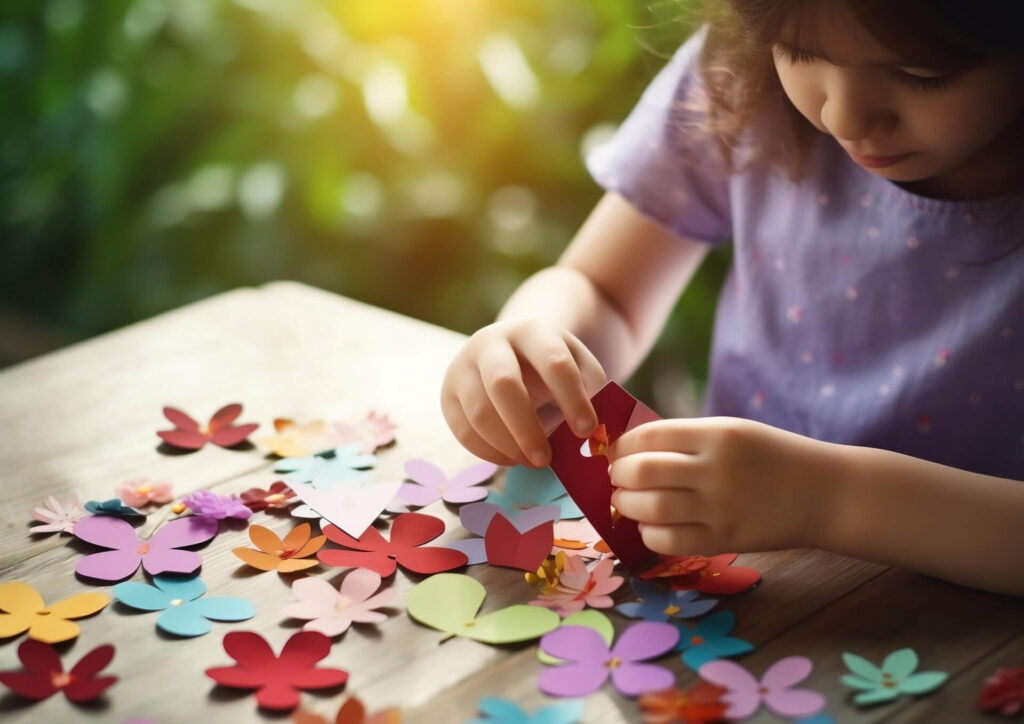
Written with empathy, experience, and a passion for unlocking the extraordinary potential of autism creative thinking.


